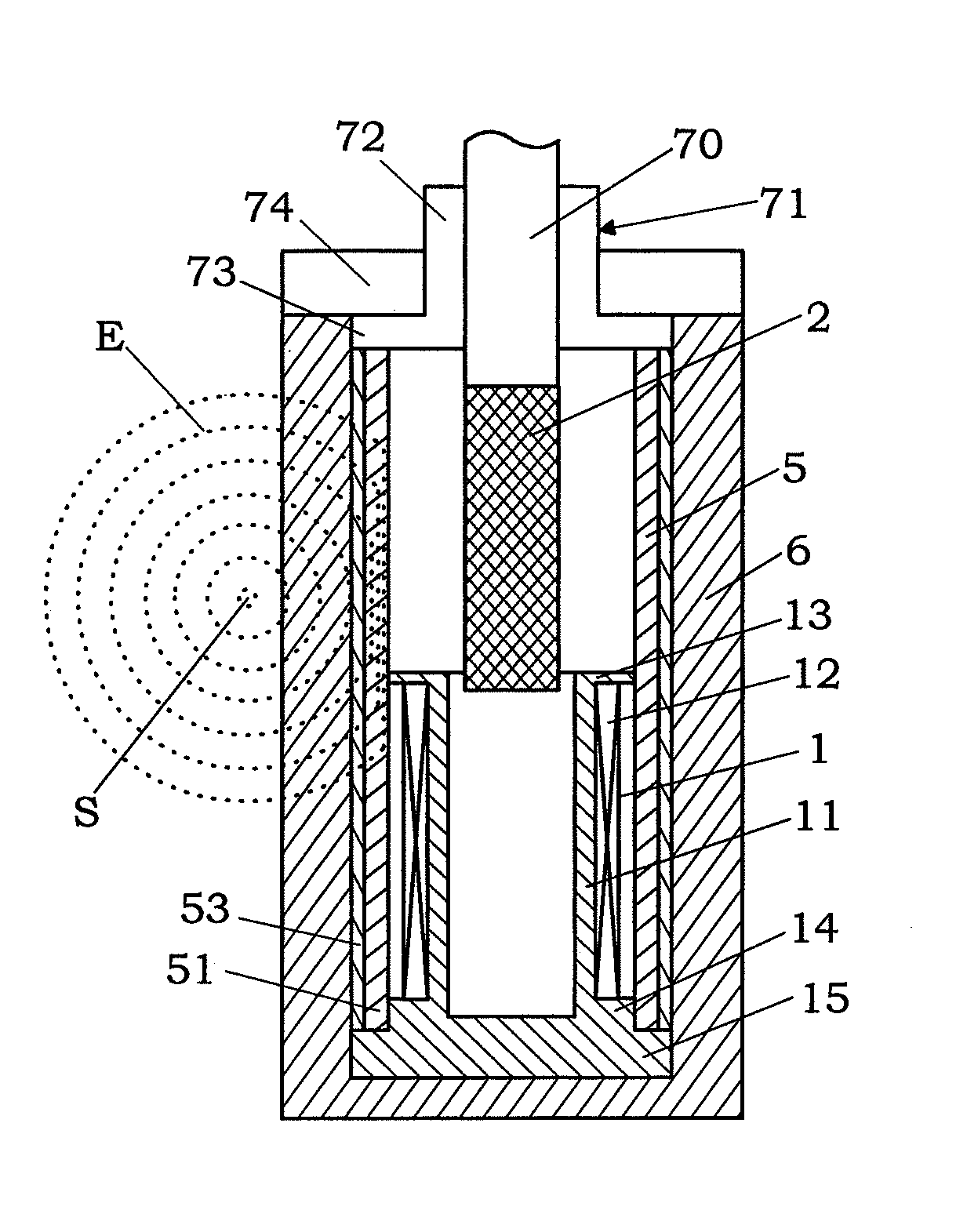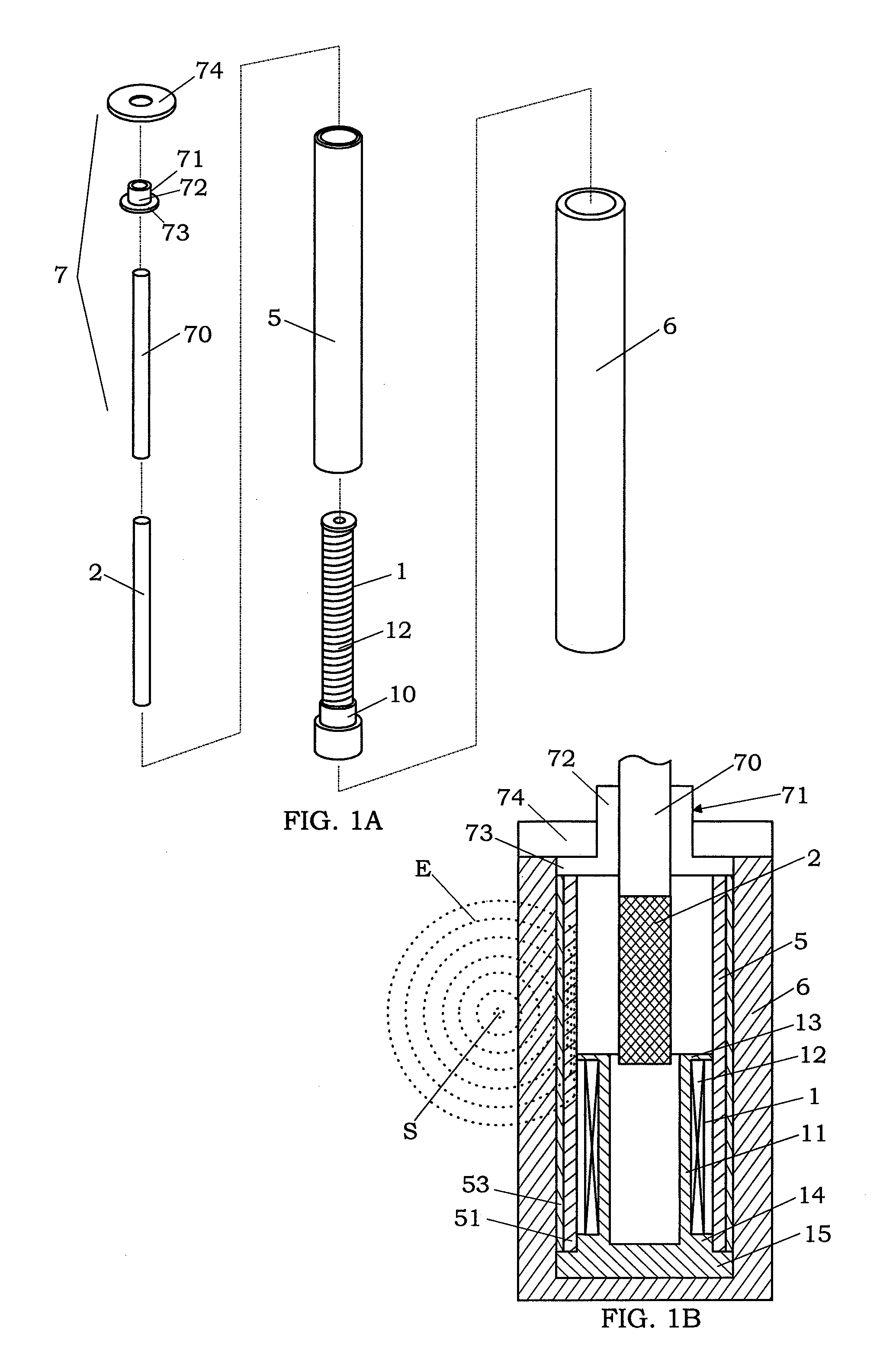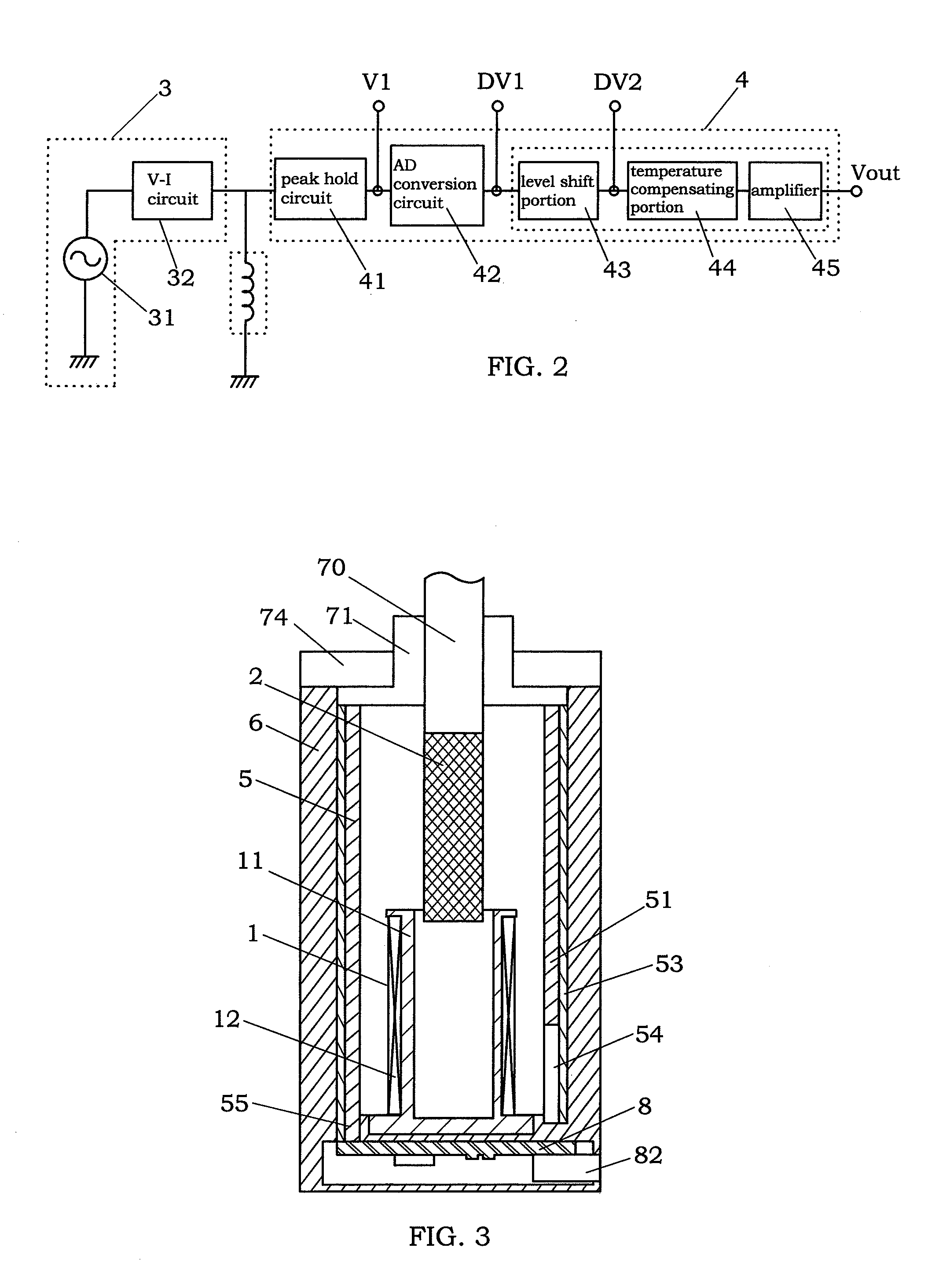Position Sensor
a position sensor and sensor technology, applied in the field of position sensors, can solve the problems of reducing the output sensitivity, deteriorating the detection accuracy, and reducing the sensitivity of the position sensor, so as to achieve smooth displacement
- Summary
- Abstract
- Description
- Claims
- Application Information
AI Technical Summary
Benefits of technology
Problems solved by technology
Method used
Image
Examples
first embodiment
[0035]The present embodiment is characterized by using a guide means comprising guide and support portions with the following features in the position sensor with the basic structure described above. That is, as shown in FIG. 1A, the guide portion of this embodiment is a shaft 70 having an outer diameter substantially equal to the magnetic core 2, and connected to an upper end surface of the magnetic core 2. An upper end surface of the shaft 70 is connected to an object to be detected (not shown). On the other hand, the support portion is provided with a tubular bearing member 71, which is formed such that an outer peripheral surface of the shaft 70 slidably contact an inner surface of the bearing member, and a ring-like cover 74 for securing the bearing member 71 to a predetermined position in the case 6.
[0036]The bearing member 71 is integrally formed with a cylindrical portion 72 having opposite open ends, and a circular flange 73 outwardly extending from a bottom end of the cyli...
second embodiment
[0039]The present embodiment is characterized by using a guide means comprising guide and support portions with the following features in the position sensor with the basic structure described above. That is, as shown in FIG. 4A, the guide portion of this embodiment is provided with a pair of guide bars 20 formed in a columnar shape to extend in substantially parallel with the magnetic core 2, a coupling plate 21 formed in a substantially square shape and used to couple the magnetic core 2 with the guide bars, and a rod-like projection 22 used for a connection with an object to be detected. When the guide bar 20 is formed by a tubular member such as a pipe material, a reduction in weight of the guide portion can be achieved. On the other hand, the support portion 60 of this embodiment attached to one end of the coil bobbin 10 of the detection coil 1 has an opening 61, through which the magnetic core 2 is inserted into the detection coil 1, and guide openings 62, into which the pair ...
third embodiment
[0043]The present embodiment is characterized by using a guide means comprising guide and support portions with the following features in the position sensor with the basic structure described above. That is, as shown in FIGS. 7A and 7B, the support portion 60 of this embodiment has an opening 61, into which the magnetic core 2 is inserted, at one end of the detection coil 1, and a pair of columnar projections 63, which are angularly spaced from each other by substantially 180 degrees around the center axis of the detection coil 1 and extend in substantially parallel to each other in the axial direction of the detection coil 1. On the other hand, the guide portion is provided with a coupling plate 21 having a substantially square shape and a rod-like projection 22 used for a connection with an object to be detected. The coupling plate 21 connected to the magnetic core 2 has guide openings 25, into which the columnar projections 63 are respectively inserted. The pair of the columnar ...
PUM
 Login to View More
Login to View More Abstract
Description
Claims
Application Information
 Login to View More
Login to View More - R&D
- Intellectual Property
- Life Sciences
- Materials
- Tech Scout
- Unparalleled Data Quality
- Higher Quality Content
- 60% Fewer Hallucinations
Browse by: Latest US Patents, China's latest patents, Technical Efficacy Thesaurus, Application Domain, Technology Topic, Popular Technical Reports.
© 2025 PatSnap. All rights reserved.Legal|Privacy policy|Modern Slavery Act Transparency Statement|Sitemap|About US| Contact US: help@patsnap.com



